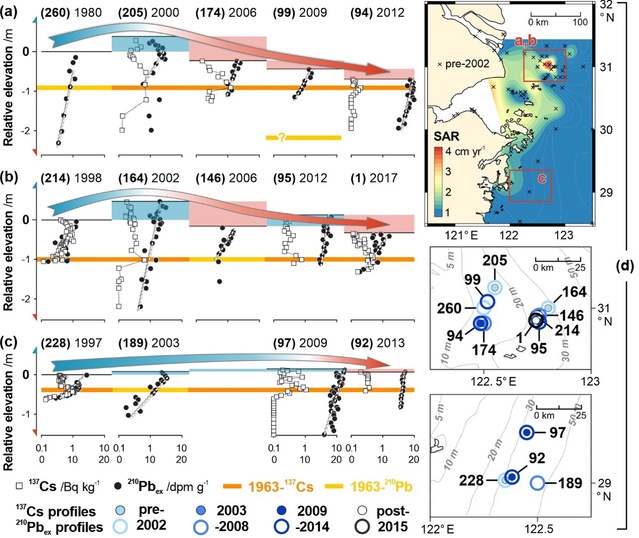Yijing Wu1 , Daidu Fan1,2 , Jianfeng Su1
1 State Key Laboratory of Marine Geology, Tongji University, Shanghai, China
2 Laboratory of Marine Geology, QingdaoMarine Science and Technology Center, Qingdao, China
Abstract
Nearshore erosion is well‐documented in sediment‐deficit river deltas but remains lessunderstood beyond their delta front (DF), particularly its extension to the deeper prodelta (PD) and distal mud(DM). This study investigates the response of Changjiang subaqueous delta and its DM to sediment declinefollowing the 2003 closure of the Three Gorges Dam. By analyzing temporal and spatial variations in 210Pbexprofile styles, discrepancies between 210Pb and 137Cs sediment accumulation rates, and surface sediment grainsizes, we identified the onset of erosion at the DF shortly after 2003, which spread to the PD by 2009 andreached the northern DM by 2015. By tracking the burial depths of the 1963 137Cs peak, we found progressivelylower erosion rates in newly eroded subzones primarily due to sediment redistribution. This study, leveraginghistorical radionuclides data, offers a valuable approach for monitoring erosion in areas lacking remote sensingdetection and historical bathymetric data.
Full Article:https://doi.org/10.1029/2024GL113057

Figure. 210Pbex and 137Cs profiles across different time‐intervals in the depocenters of the (a) delta front, (b) prodelta and(c) northern distal mud. (d) The pre‐2002 depocenters and enlarged views of core sites.

